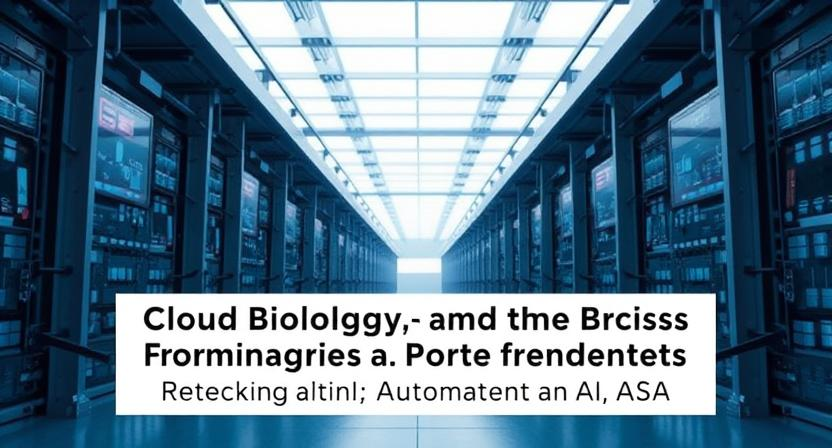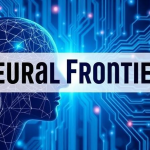Introduction: A New Era for Biotech
In recent years, the biotech industry has undergone a rapid transformation driven by automation, artificial intelligence (AI), and cloud-based infrastructures. At the heart of this evolution lies a groundbreaking innovation: biofoundries. These high-tech, automated laboratories are redefining how we design, test, and scale biological systems. With their ability to perform complex biological experiments at unprecedented speeds and precision, biofoundries are accelerating advancements in synthetic biology, drug discovery, and personalized medicine.
What once required months of manual lab work can now be done in days—or even hours—with minimal human intervention. As biology converges with software, robotics, and data science, a new wave of “cloud biology” platforms is emerging, enabling remote access to sophisticated lab resources and opening the door to a new future of decentralized biotech innovation.
What Are Biofoundries?
A biofoundry is an integrated, automated facility that uses robotics, machine learning, and high-throughput screening to design and test biological systems. Think of it as a factory for genetic code—capable of assembling DNA, engineering microbes, and optimizing biological pathways with speed and scale.
These labs leverage the Design-Build-Test-Learn (DBTL) cycle—a framework originally popularized in software development—to iterate rapidly on biological prototypes. With robotic platforms handling everything from pipetting to sequencing, and AI algorithms optimizing designs in real time, biofoundries are removing bottlenecks that have traditionally slowed biotech research.
Cloud Labs: Biology as a Service
One of the most disruptive concepts linked to biofoundries is the rise of cloud labs—remote-access platforms where researchers can design experiments via a web interface and have them executed by robots in fully automated labs. This model, sometimes referred to as “biology-as-a-service” (BaaS), removes the need for physical lab infrastructure and enables anyone with an internet connection to perform cutting-edge biology.
Startups like Emerald Cloud Lab, Strateos, and Transcriptic (now part of Strateos) are leading this charge, creating cloud-based research hubs that operate 24/7. Scientists can write protocols, launch experiments, and receive analyzed data—all without ever stepping into a lab. This dramatically reduces costs, democratizes access to biotechnology, and speeds up innovation across academia and industry.
Driving Synthetic Biology Forward
Synthetic biology—the design and construction of new biological parts and systems—is one of the biggest beneficiaries of the biofoundry revolution. Using programmable platforms, scientists can now create custom organisms to produce biofuels, pharmaceuticals, biodegradable plastics, and even engineered foods.
At institutions like the Lawrence Berkeley National Laboratory’s Joint BioEnergy Institute (JBEI) and the UK’s SYNBIOCHEM Center, biofoundries are being used to develop microbial factories capable of converting plant material into sustainable chemicals and materials. These innovations are key to building a circular bioeconomy that moves beyond fossil fuels.
Moreover, companies like Ginkgo Bioworks have built massive biofoundry infrastructures to industrialize organism design. Dubbed the “Amazon Web Services of biology,” Ginkgo offers scalable organism engineering services to partners ranging from pharma giants to agricultural startups. Its high-throughput foundries can engineer thousands of strains in parallel, pushing the boundaries of what’s possible in biotech.
Accelerating Drug Discovery
The pharmaceutical industry is also turning to biofoundries and cloud labs to speed up drug discovery pipelines. Traditional drug development is time-consuming and expensive, with high failure rates. Biofoundries offer a more agile approach by enabling rapid prototyping, automated screening, and predictive modeling.
By combining automation with AI, researchers can quickly test how different compounds interact with biological targets. Machine learning algorithms can then analyze the results and suggest optimized variants for further testing. This accelerates the identification of viable drug candidates while minimizing human error and repetitive labor.
For example, biotech firms like Recursion are using automated microscopy and deep learning to analyze cell behaviors in response to thousands of compounds—generating insights that would be impossible for humans to parse manually. Others, like Insitro, are integrating biofoundries with machine learning models trained on massive biological datasets to predict disease pathways and therapeutic responses.
Remote and Scalable: The Future of Global Collaboration
One of the most exciting implications of cloud-connected biofoundries is the ability to facilitate global collaboration. Researchers in different parts of the world can co-develop biological projects in real time, without needing to ship samples or travel to centralized facilities.
This is especially valuable for emerging markets and academic institutions with limited lab access. Through platforms like Benchling or TeselaGen, scientists can design DNA sequences, share protocols, and analyze data—all within a unified digital environment. The entire research pipeline becomes virtualized, secure, and infinitely scalable.
This distributed approach to biology is reminiscent of the software world’s shift to cloud computing and DevOps. Just as cloud servers revolutionized web development, cloud biofoundries are set to do the same for biotech.
Challenges and Considerations
Despite their promise, biofoundries and cloud labs face several challenges. Standardizing biological data, ensuring reproducibility, and integrating AI in meaningful ways are ongoing hurdles. Biological systems are inherently complex and less predictable than digital ones, making automation more difficult.
There’s also the question of ethical oversight. As the ability to engineer life becomes more accessible, robust frameworks will be needed to prevent misuse—particularly in areas like gene editing, synthetic viruses, and bioweapons.
Furthermore, the initial capital investment for building a biofoundry remains high. While cloud-based platforms can reduce costs for end-users, maintaining and scaling these systems still requires significant resources and technical expertise.
Looking Ahead: Living Systems as Code
The long-term vision for biofoundries aligns with a provocative idea: biology as programmable code. As DNA synthesis becomes faster and cheaper, and AI grows more capable of understanding biological complexity, we are moving toward a future where living systems can be designed with the same precision as software.
Imagine a future where startups can prototype new antibiotics in days, where personalized gene therapies are manufactured on demand, and where climate-resilient crops are engineered remotely in biofoundries around the globe. This is not science fiction—it is the emerging reality shaped by the fusion of biology, automation, and AI.
Conclusion
The convergence of automation, cloud infrastructure, and AI is propelling the biotech industry into a bold new future. Biofoundries—once a niche innovation—are becoming the backbone of this transformation. By unlocking scalable, fast, and collaborative biological engineering, they are redefining how we discover drugs, produce sustainable materials, and understand life itself.
As we stand on the cusp of programmable biology, the question is no longer whether biofoundries will change biotech—it’s how far and how fast they’ll take us.






Leave a Reply